Nature Knows and Psionic Success
God provides
7 Conditions masquerading as dementia

After JP Morgan Chase de-banks Dr. Mercola, #Robinhood SEIZES Health Ranger accounts Advertisement
More than 40% of dementia diagnoses have been shown to be wrong. Here’s what may really be going on.
(Article by GMI Reporter republished from GreenMedInfo.com )
Imagine this nightmare. For the last few years your mother has had serious memory problems. She gets lost driving. She repeats the same question to you over and over again. She can’t process new information. She loses her train of thought in mid-sentence. A CT scan comes back with a diagnosis of early Alzheimer’s disease. The doctors offer a prescription with little encouragement it will work.
Do you despair?
A new program from UCLA and the Buck Institute for Research on Aging offers new hope. In the first study of its kind, researchers have proved that natural therapies can not only slow the progress of dementia but can actually reverse it.
In a paper titled ” Reversal of Cognitive Decline: A novel therapeutic program ” Dr. Dale Bredesen showed how 9 out of the 10 subjects diagnosed with dementia got their minds back. [i]
Dr. Bredesen is a professor of neurology at The Mary S. Easton Center for Alzheimer’s Disease Research at UCLA, as well as a professor at the Buck Institute. The study was supported by multiple entities including the National Institutes of Health.
Cognitive decline is a major fear as we age. According to the Alzheimer’s Association ” dementia is a general term for loss of memory and other mental abilities severe enough to interfere with daily life.” Alzheimer’s disease – just one of many forms of dementia – accounts for 60 to 80 percent of dementia cases. It affects about 5.4 million Americans and 30 million people around the world. By 2050, it’s expected to grow to 160 million people globally, including 13 million Americans. There is no effective treatment for Alzheimer’s and it is already the third leading cause of death in the United States.
Dr. Bredesen believes that multiple factors influence the development of dementia and Alzheimer’s. In a small study, he and his colleagues designed personalized and comprehensive protocols to reverse memory loss in 10 patients.
The results were remarkable. Nine of the 10 participants showed improvement in their memories within three to six months of starting the program.
Six patients had had to discontinue working or were struggling with their jobs at the time they joined the study. ALL were able to return to work or continue working with improved performance.
The subjects included five patients with memory loss associated with Alzheimer’s disease. The others had amnestic mild cognitive impairment , and subjective cognitive impairment.
Only one patient, diagnosed with late stage Alzheimer’s, did not improve.
Doctors used a “systems approach” in treating the patients. They developed a complex, 36-point therapeutic program that includes comprehensive changes in diet, brain stimulation, exercise, optimization of sleep, specific pharmaceuticals and vitamins, and multiple additional steps that affect brain chemistry.
In a press release Dr. Bredesen stated: The existing Alzheimer’s drugs affect a single target, but Alzheimer’s disease is more complex. Imagine having a roof with 36 holes in it, and your drug patched one hole very well—the drug may have worked, a single “hole” may have been fixed, but you still have 35 other leaks, and so the underlying process may not be affected much. Dr. Bredesen’s approach is based on extensive testing of each patient to determine what is affecting the signaling network in his or her brain. The protocol is then personalized for the patient. A sample protocol for one of his patients in the study included: eliminating all simple carbohydrates;
eliminating gluten and processed food;
increasing vegetables, fruits, and non-farmed fish;
reducing stress with yoga and meditation;
taking melatonin each night;
increasing sleep from 4-5 hours per night to 7-8 hours per night;
taking methylcobalamin (vitamin B12), vitamin D, CoQ10, and fish oil each day;
optimizing oral hygiene using an electric flosser and electric toothbrush;
hormone replacement therapy;
fasting for a minimum of 12 hours between dinner and breakfast;
fasting for a minimum of three hours between dinner and bedtime; and exercising for a minimum of 30 minutes, 4-6 days per week. Although the downside to the program is the complexity and the number of lifestyle changes required, Dr. Bredesen noted that the only side effect of the protocol was “improved health and an optimal body mass index, a stark contrast to the side effects of many drugs.”What can you do when faced with a diagnosis of cognitive decline, dementia, or Alzheimer’s disease?The UCLA protocol recognizes that dementia can have many causes and those causes are often reversible.Sharp Again Naturally ( www.sharpagain.org ) is a non-profit organization formed in 2012 to educate the public and the medical community about the reversible causes of dementia.Here are seven areas Sharp Again Naturally suggests you investigate before accepting a dementia or Alzheimer’s diagnosis. These are conditions that may cause memory loss and dementia but can be reversed: 1 . Nutritional imbalances and deficiencies. Deficiencies of omega 3s, vitamin B12 , vitamin C, magnesium, selenium, probiotics, and other nutrients frequently cause symptoms of Alzheimer’s and dementia.Adhering to a balanced Mediterranean-style diet is associated with slower cognitive decline . It’s also linked to a reduced risk of Alzheimer’s.Studies also show low vitamin D levels are linked to Alzheimer’s . Low folate (vitamin B9) may also lead to cognitive decline.Adding coconut oil may rescue a brain from Alzheimer’s . And turmeric is known to boost working memory in just one dose. 2. Artificial food colors, flavors, and sweeteners. Artificial additives of all kinds may cause dementia symptoms.Studies show the artificial sweetener aspartame impairs cognitive function and leads to memory loss . 3. Prescription medication side effects. Drugs, especially pain medications, and psychotropic drugs can severely disrupt cognition.Statins are particularly harmful. In one study from the University of California – San Diego , 90 percent of patients who stopped taking statin drugs reported improvement in cognitive problems in a matter of weeks. In some of the patients a diagnosis of […]
The Paradox Of Memory: Why We Forget When Our Brains Can Store So Much

The human brain is capable of storing 300 years of continuous video. Why, then, do we forget to do … [+] getty Many people come to therapy voicing concerns that they are overly forgetful. They may say things like: “I have trouble remembering dates, like birthdays, anniversaries or appointments. I feel like I’m letting people down or missing out on things.”
“I often forget where I put my keys, wallet, phone or glasses. I waste so much time looking for them and sometimes I’m late for work or other obligations.”
“I always forget people’s names, even if I just met them. It’s so embarrassing and frustrating.”
If you resonate with these statements, rest assured that there’s likely nothing to be concerned about. We are all forgetful from time to time, especially when it comes to routine or mundane tasks or information. Our brains are constantly processing a vast amount of information, and sometimes less important details can slip through the cracks. It doesn’t necessarily indicate a problem with our memory or cognitive abilities.
Also, contrary to popular belief, we don’t forget things because “our brains are full.” Your brain is a complex interaction of electric signals, muscle and neurons – far more intricate and dynamic than something like your phone, which comes with a finite amount of storage.
In fact, new evidence from a study published in Nature suggests that forgetting may actually be a feature of the brain, not a bug. Here’s more on that: Forgetting Promotes Learning By Allowing Us To Adapt To A Changing Environment
When scientists from Trinity College Dublin and the University of Toronto got together to study the phenomenon of forgetting, they came up with a new theory that suggests that forgetting is not just a passive process, but an active mechanism that is constantly at work in the brain.
Instead of disintegrating or decaying, older memories become less relevant and more difficult to access over time. As a result, they may eventually become, for all practical purposes, non-existent. According to the new theory, that is when we believe we have forgotten a memory.
Forbes Daily: Get our best stories, exclusive reporting and essential analysis of the day’s news in your inbox every weekday.
By signing up, you accept and agree to our Terms of Service (including the class action waiver and arbitration provisions), and Privacy Statement .
Our memories are stored in “engram cells,” which are essentially groups of specialized neurons that fire in response to an environmental cue.
For example, when we smell the perfume that our recent ex-partner used to wear, it can trigger certain groups of cells in our brain and bring back a flood of memories associated with the relationship. However, as time passes and we form new romantic connections with people who have different preferences in fragrances, our brain creates new engram cells to store information that is more relevant to our current situation. As a result, when we encounter the scent of our ex-partner’s perfume again, after a considerable lapse in time, it is less likely to activate the original group of cells, causing us to “forget” the memory. This doesn’t mean that the memory is gone, it just means that it is not as easily accessible because it is no longer as relevant to our present circumstances.
Because the memory itself isn’t lost, the authors of the study are optimistic about the possibility of reversing the process of natural forgetting. However, the study also looked at the mechanism of forgetting in certain pathologies like Alzheimer’s disease, where the outcomes weren’t as promising.
The study found that, in the case of pathologies, the natural mechanisms of forgetting at play are hijacked by the disease. This renders engram cells highly inaccessible and, thus, leads to a more or less permanent state of memory loss. Conclusion
Your brain is a remarkable feat of neurochemistry, with virtually unlimited storage capacity for information. While it’s natural to occasionally forget small details due to the vast amount of data your brain processes every second, there are ways to help mitigate this. If you find yourself frequently misplacing your house keys or forgetting important dates, consider using a reminder app on your phone to help keep track of these details. This allows your brain to focus on more important tasks, such as learning and processing new skills or information.
How a neurologist keeps his brain healthy, and what he wants to do better

Dr. Bruce Ovbiagele on a hike at Mount Burdell in Marin County, California. “I love doing things in nature,” he said. “And hiking, I think more than anything else, has been a way to be more physically active and also to just unplug.” Credit: Dr. Bruce Ovbiagele Few people know more about stroke prevention and brain health than neurologist and epidemiologist Dr. Bruce Ovbiagele. And one of the first things he’d like you to know is that you have a “tremendous” amount of control over your own stroke risk.
Most strokes are preventable, said Ovbiagele, a professor of neurology and associate dean at the University of California, San Francisco. “And what needs to be done is all within our power to do.”
Ovbiagele—who is chief of staff at the San Francisco Veterans Affairs health care system, holds professorships on four continents, serves as editor-in-chief of the Journal of the American Heart Association , and has published more than 600 research articles —does a lot to protect his own brain health. But even for him, parts of doing so can be a challenge.
He discussed his routine for “The Experts Say,” an American Heart Association News series where specialists explain how they apply what they’ve learned to their own lives. (The conversation has been edited.) What’s the most important thing someone should know about stroke?
One, what it is. Many people are not aware of what a stroke actually is, what part of the body is affected, and how devastating it can be.
(A stroke occurs when a blood vessel to the brain is either blocked or ruptures, starving the brain of oxygen. Stroke is the fifth-leading cause of death in the United States and a top cause of disability worldwide.)
Two, that it’s preventable. It’s well within our own ability to actually prevent strokes. What do you tell your patients about prevention?
First of all, I encourage them to eat a healthy diet . A diet that is well-aligned with the Mediterranean diet—that is, a diet that has fruits, nuts and vegetables and judicious use of olive oil—has been shown to reduce a person’s risk of experiencing a stroke.
Exercise is important because physical activity lowers blood pressure , keeps weight down and better controls the way the body can control blood sugar, or glucose. So, at the very least, moderate exercise most days of the week, for about 30 minutes each time, can be helpful in reducing the risk of stroke.
Trying to avoid stress to every extent possible can be helpful. Complying with your doctor’s recommendations is also very, very important.
The last thing I’d say is making sure that one is aware of one’s numbers. And by numbers, I mean making sure that one goes for routine care and tries to make sure they’re aware of their cholesterol, blood sugar and especially blood pressure, because that is the primary modifiable risk factor for a stroke. What are some of the factors not in their control?
Age is the biggest one. We know that for every decade after the age of 55, the risk of experiencing a stroke doubles.
The other thing is race. We’ve known for almost 60 years that people of African ancestry in this country are at substantially higher risk of experiencing, and unfortunately dying from, a stroke compared to their non-Hispanic white counterparts. About half of that excess risk can be explained by lifestyle factors. But the other half, we still cannot explain. How does your own lifestyle line up with your advice?
I try to exercise every day. I do a little bit of modest resistance training by doing pushups. I work out on a stationary bike, as well. I don’t always succeed in doing that every day, but I try to do it at least four or five days a week.
I don’t like exercise just being routine. So, when I do exercise on my bike, I do it to music.
Hiking with my spouse is one of my big things. I love doing things in nature. And hiking, I think more than anything else, has been a way to be more physically active and also to just unplug.
Beyond the regular exercise—which is important—I incorporate a healthy lifestyle into the activities that I do. As I’m speaking to you right now, I’m standing. I have a standing desk , so I try to make sure that I stand most of the time unless there’s a compelling need to sit.
I take the staircase almost all the time unless there’s some compelling reason not to. I’m notorious for doing that in every workplace that I’ve been. But I do that all the time—and encourage my colleagues to do so, as well. What else do you do on a daily basis?
I try to get at least five servings of fruits or vegetables in. If I’m feeling a little peckish, I nibble on almonds. I try not to do too much of that. But I do nibble, and that helps me feel a little more full.
Tapping into that Mediterranean diet, I love fish, and fish oils are very protective for the blood vessels . I’m not a vegetarian, but I eat very little meat. I do eat chicken once in a while.
I try to maintain a positive attitude. Several studies have shown that people who tend to have a more upbeat attitude tend to live longer.
And I make it a point to know my numbers and make sure they are under control.
You’re incredibly busy. You teach around the world, and you’ve earned advanced degrees in medicine, law, business and more. How do you manage to fit in exercise?
I will say that I could do better. But one of my strengths is that as much as possible, I really try to do things that I enjoy. I love learning. Some people might see that as onerous, but that actually fuels me.
Sometimes I feel I’ve never really balanced things properly. But I will say that I try to mostly do things that fuel me. Is there a […]
Study: Regular brushing and flossing can help support brain health and protect against dementia

Advertisement Decentralize.TV – Episode 7 – July 27, 2023 – LENR (Low Energy Nuclear Reactions) can decentralize power production and provide abundant energy for all Scott McKay the Patriot Streetfighter unveils a fascinating wellness center based on principles of energy medicine Advertisement
According to research, having a nice smile and healthy gums can help support brain health.
Findings from a study published in the journal Neurology suggest that poor dental health is linked to hippocampal atrophy , or shrinkage of the hippocampus, which is a marker for Alzheimer’s disease. Brain shrinkage linked to poor oral health
Study author Satoshi Yamaguchi, an associate professor at Tohoku University Graduate School of Dentistry in Sendai, Japan, explained that retaining more healthy teeth without periodontal disease may help support brain health.
Because periodontal disease is also associated with systemic inflammation and bacteria in the bloodstream, which may cause chronic disease, keeping your teeth, mouth and gums healthy can help boost your overall health.
Someone with poor oral hygiene can develop gingivitis, which is an inflammatory disease caused by an accumulation of plaque (bacteria) on your teeth that often results in bleeding gums.
When left untreated, gingivitis can cause periodontitis, which is a more serious infection that can lead to teeth loss.
Periodontitis is a type of gum disease that has been considered a potential risk factor for Alzheimer’s since 2015, when scientists from the University of Bristol reported that “periodontal pathogens are possible contributors to neural inflammation and SLOAD [sporadic late onset Alzheimer’s disease].”
In the Neurology study, researchers worked with 172 volunteers aged 55 years and over who had no cognitive decline at the start of the study.
The volunteers underwent dental exams and took memory tests. The research team also conducted brain scans to measure their hippocampus volume at the start of the study and four years later.
Results showed that both gum disease and number of teeth were linked to brain changes.
The volunteers with mild gum disease and fewer teeth had a faster rate of shrinkage in the left hippocampus. Among this group, having one less tooth increased brain shrinkage at a rate equivalent to at least a year of brain aging.
Among the volunteers with severe gum disease, having more teeth was linked to a faster rate of brain shrinkage, with one more tooth being equivalent to 1.3 years of brain aging.
In a news release, Yamaguchi explained that tooth loss and gum disease , which is “inflammation of the tissue around the teeth that can cause shrinkage of the gums and loosening of the teeth,” are very common and analyzing any possible links with dementia is crucial.
The Neurology study revealed that these conditions may have a role in the health of the brain region that controls thinking and memory, giving people another reason to maintain proper oral health. Bacteria linked to gum disease can travel to the brain
In 2019, researchers from the University of Louisville found Porphyromonas gingivalis , a pathogen linked to chronic periodontitis, in the brains of patients with Alzheimer’s . Gingipains, the toxic proteases from P. gingivalis, were also found in the brains of patients with the brain disorder.
The researchers reported that gingipains are linked to two protein markers of Alzheimer’s: Tau and ubiquitin. (Related: Maintaining good oral health key to preventing Alzheimer’s disease, reports study .)
In mice subjects, oral infection with P. gingivalis resulted in brain colonization of the pathogen and increased production of amyloid beta 1-42, which is found in amyloid plaques.
Findings from both in vivo and in vitro studies revealed that gingipains are neurotoxic and damaging to tau, which is essential for normal neuronal function.
Gingipain antigens were also detected in the brains of people with Alzheimer’s as well as in those with Alzheimer’s pathology who had not yet been diagnosed.
Based on these, the researchers believe that brain infection with P. gingivalis is not a result of poor dental care following the onset of dementia or a consequence of late-stage disease. Rather, it is an early event that can clarify the pathology observed in middle-aged people before cognitive decline.
Data also suggests that bacteria may access the brain from an infected oral cavity via infection of endothelial cells protecting the blood-brain barrier or infection of monocytes (white blood cells) that reach the brain.
After entering the brain, P. gingivalis may gradually spread over many years from neuron to neuron along anatomically connected pathways, like what has been demonstrated for vascular cell-to-cell transmission of P. gingivalis , explained the researchers. Periodontal disease linked to Alzheimer’s disease
People diagnosed with Alzheimer’s usually have poor oral health, which has commonly been associated with declining self-care or neglect of oral health by caregivers.
Older studies also suggest that periodontal disease may be a contributing factor in the development of Alzheimer’s.
One systematic review and meta-analysis that included 13 studies revealed that the risk of Alzheimer’s and mild cognitive impairment in those with severe periodontal disease was much higher compared to people without periodontal disease. Gum disease is a “silent condition” Data shows that among adults aged 30 or over, 46 percent have signs of gum disease, while nine percent of adults already have severe gum disease.Unfortunately, many people are not aware they have it because gum disease is often a “silent” condition, meaning it often doesn’t show signs and symptoms until it reaches more advanced stages.In the initial stage of gingivitis, you may notice that your gums bleed when you are brushing your teeth, flossing, or eating hard food. Your gums may also appear red or swollen.As the disease progresses, you will notice that your gums may pull away from your teeth, making your teeth appear longer. In some cases, your teeth may also become loose. You may also notice sores in your mouth, bad breath and pus between your gums and teeth.Aside from cognitive decline, periodontitis has been linked to systemic diseases, such as: Adverse pregnancy outcomes Cancer Diabetes Heart disease Nervous system diseases Respiratory disease Protecting oral health early on is crucial Because deposits of amyloid beta in the brain may start one to two […]
One simple brain hack might boost learning and improve mental health

“Watch out for the security guard!” A video of the computer game shows how participants chose between four different colored doors to reveal different paintings (and their value). Participants had to avoid being spotted by a security guard by quickly pressing space bar when he popped up, as an attention check. Credit: Alyssa Sinclair – Duke Institute for Brain Sciences Shifting from a high-pressure mindset to a curious one improves people’s memory.
New research from Duke found that people who imagined being a thief scouting a virtual art museum in preparation for a heist were better at remembering the paintings they saw, compared to people who played the same computer game while imagining that they were executing the heist in-the-moment.
These subtle differences in motivation—urgent, immediate goal-seeking versus curious exploration for a future goal—have big potential for framing real-world challenges such as encouraging people to get a vaccine, prompting climate change action, and even treating psychiatric disorders.
The findings appeared online July 25 in the Proceedings of the National Academy of Sciences.
Alyssa Sinclair, Ph.D. ’23, a postdoctoral researcher working in the lab of Duke Institute for Brain Sciences director Alison Adcock, Ph.D., M.D., recruited 420 adults to pretend to be art thieves for a day. The participants were then randomly assigned to one of two groups and received different backstories.
“For the urgent group, we told them, ‘You’re a master thief, you’re doing the heist right now. Steal as much as you can!’,” Sinclair said. “Whereas for the curious group, we told them they were a thief who’s scouting the museum to plan a future heist.”
After getting these different backstories, however, participants in the two groups played the exact same computer game, scored the exact same way. They explored an art museum with four colored doors, representing different rooms, and clicked on a door to reveal a painting from the room and its value. Some rooms held more valuable collections of art. No matter which scenario they were pretending to be in, everyone earned real bonus money by finding more valuable paintings.
The impact of this difference in mindset was most apparent the following day. When participants logged back in, they were met with a pop quiz about whether they could recognize 175 different paintings (100 from the day before, and 75 new ones). If participants flagged a painting as familiar, they also had to recall how much it was worth.
Sinclair and her co-author, fellow Duke psychology & neuroscience graduate student Candice Yuxi Wang, were gratified after they graded the tests to see their predictions had played out.
“The curious group participants who imagined planning a heist had better memory the next day,” Sinclair said. “They correctly recognized more paintings. They remembered how much each painting was worth. And reward boosted memory, so valuable paintings were more likely to be remembered. But we didn’t see that in the urgent group participants who imagined executing the heist.”
Urgent group participants, however, had a different advantage. They were better at figuring out which doors hid more expensive pieces, and as a result snagged more high value paintings. Their stash was appraised at about $230 more than the curious participants’ collection.
The difference in strategies (curious versus urgent) and their outcomes (better memory versus higher-valued paintings) doesn’t mean one is better than the other, though.
“It’s valuable to learn which mode is adaptive in a given moment and use it strategically,” Dr. Adcock said.
For example, being in an urgent, high-pressure mode might be the best option for a short-term problem.
“If you’re on a hike and there’s a bear, you don’t want to be thinking about long-term planning,” Sinclair said. “You need to focus on getting out of there right now.”
Opting for an urgent mindset might also be useful in less grisly scenarios that require short-term focus, Sinclair explained, like prompting people to get a COVID vaccine.
For encouraging long-term memory or action, stressing people out is less effective.
“Sometimes you want to motivate people to seek information and remember it in the future, which might have longer term consequences for lifestyle changes,” Sinclair said. “Maybe for that, you need to put them in a curious mode so that they can actually retain that information.”
Sinclair and Wang are now following up on these findings to see how urgency and curiosity activate different parts of the brain. Early evidence suggests that, by engaging the amygdala, an almond-shaped brain region best known for its role in fear memory , “urgent mode” helps form focused, efficient memories. Curious exploration, however, seems to shuttle the learning-enhancing neurochemical dopamine to the hippocampus, a brain region crucial for forming detailed long-term memories.
With these brain results in mind, Dr. Adcock is exploring how her lab’s research might also benefit the patients she sees as a psychiatrist.
“Most of adult psychotherapy is about how we encourage flexibility, like with curious mode” Dr. Adcock said. “But it’s much harder for people to do since we spend a lot of our adult lives in an urgency mode.”
These thought exercises may give people the ability to manipulate their own neurochemical spigots and develop “psychological maneuvers,” or cues that act similar to pharmaceuticals, Dr. Adcock explained.
“For me, the ultimate goal would be to teach people to do this for themselves,” Dr. Adcock said. “That’s empowering.”
Provided by Duke University
This simple brain hack may help boost memory and improve your mental health
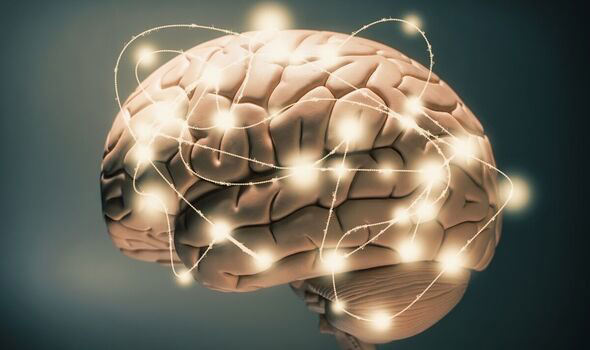
Researchers from Duke University have revealed a simple ” brain hack ” that has the potential to boost both your memory, but also your mental health.
They discovered this in a rather unusual way – by getting more than 400 people to play at being art thieves for the day.
The team found that people who pretended to be scouting a virtual art museum as if planning for an upcoming heist were much better at remembering the paintings they saw than those imagining themself mid-heist, collecting art supermarket-sweep-style.
According to the team, exploiting the effects of these subtle differences in motivation could be applied to help people better tackle real-world challenges.
For example, they said, it could be used to encourage people to get vaccinated , to help prompt actions to tackle climate change – and even to treat psychiatric disorders.
In the study, cognitive neuroscientist Dr Alyssa Sinclair of Duke University in North Carolina and her colleagues recruited 420 adults to pretend to be art thieves for the day.
Each participant was randomly assigned to one of two groups that received different backstories for the roleplaying exercise.
Dr Sinclair explained: “For the urgent group, we told them – ‘You’re a master thief, you’re doing the heist right now. Steal as much as you can!’
“Whereas for the curious group, we told them they were a thief who’s scouting the museum to plan a future heist.”
After being assigned their backstory, each volunteer played the exact same computer game, in which they explored a simplified digital representation of an art museum.
This museum had four colored doors – to represent different rooms – and clicking on each of these revealed one of the paintings from that room, displayed along with its value.
Some of the rooms, the researchers explained, had been programmed to hold more valuable collections of art, discovering pieces from which secured the player a real financial bonus.
The next day, each participant was asked to take a pop quiz to see how well they could recognize the paintings they had seen from a set of 175 works – 100 of which were in the virtual museum the day before, and 75 of which were brand new.
If participants reported that the painting was familiar, then they were also asked to recall how much it had been said to be worth.
Dr Sinclair said: “The curious group participants who imagined planning a heist had a better memory the next day.
“They correctly recognized more paintings. They remembered how much each painting was worth. And reward boosted memory, so valuable paintings were more likely to be remembered.
“But we didn’t see that in the urgent group participants who imagined executing the heist.”
Instead, volunteers in the urgent group were found to have proven better at figuring out which of the four doors in the virtual museum lead to more expensive pieces.
Accordingly, they succeeded in securing more money – $230 more than in the curious participants’ collection.
Neither of the two strategies – curious versus urgent – are necessarily better, the team noted.
Paper co-author Dr Alison Adcock – a neurobiologist at Duke’s Institute for Brain Sizes – explained: “It’s valuable to learn which mode is adaptive in a given moment and use it strategically.”
Urgency, for example, might well be the best option when faced with many a short-term problem.
Dr Sinclair said: “If you’re on a hike and there’s a bear, you don’t want to be thinking about long-term planning. You need to focus on getting out of there right now!”
Cultivating an urgent mindset might also be useful for less extreme situations that also require short-term focus – such as in getting an important vaccination.
In contrast, stressing people out is likely going to be less effective if the goal is to encourage memory or behaviors beyond the short-term.
Dr Sinclair explained: “Sometimes you want to motivate people to seek information and remember it in the future, which might have longer-term consequences for lifestyle changes.”Maybe for that, you need to put them in a curious mode so that they can actually retain that information.”With their initial study complete, the researchers are now investigating how urgency and curiosity activate different parts of the brain.Their preliminary findings suggest that the amygdala – an almond-shaped region of the brain involved in emotional processing – is responsible for getting us into “urgent mode” and allowing us to form focussed, efficient short-term memories.In contrast, curious exploration appears to be facilitated by the hippocampus, based on the activity of the neurochemical dopamine there, helping us to form detailed long-term memories.These findings, Dr Adcock noted, might benefit the patients she sees in her role as a psychiatrist.She explained: “Most of adult psychotherapy is about how we encourage flexibility, like with curious mode. But it’s much harder for people to do, since we spend a lot of our adult lives in an urgency mode.”Thought experiments may help people to develop “psychological maneuvers” – cures that act similarly to pharmaceuticals – to better handle certain situations.Dr Aldcock concluded: “For me, the ultimate goal would be to teach people to do this for themselves. That’s empowering.”The full findings of the study were published in the journal Proceedings of the National Academy of Sciences .
Brain-healthy MIND diet linked to better focus among young students
(© karelnoppe – stock.adobe.com) URBANA, Ill. — The “MIND diet” was originally created to help older adults stave off dementia and keep their minds sharp. A new study, however, reveals that this approach to eating can also help young students find their focus. Researchers at the University of Illinois say the MIND diet may promote improved attention among pre-adolescents. What is the MIND diet?
The Mediterranean-DASH Diet Intervention for Neurodegenerative Delay focuses heavily on fresh fruit, vegetables, and legumes including beans, lentils, and peas — similar to both the DASH and Mediterranean diets on their own. However, MIND also recommends specific foods, such as leafy greens and berries, which are known to promote brain health. While the MIND diet has shown positive effects among adults, very few studies haves studied the impact of MIND on children.
The research team examined two distinct diets: The Healthy Eating Index – 2015 (HEI-2015), based on the Dietary Guidelines for Americans, and the MIND diet, which combines a traditional Mediterranean diet with the heart-healthy Dietary Approaches to Stop Hypertension (DASH) diet.
“We assessed how adherence to these diets was associated with children’s attentional inhibition — the ability to resist distracting stimuli — and found that only the MIND diet was positively linked with children’s performance on a task assessing attentional inhibition,” says Shelby Keye, PhD, who performed the work as a doctoral student in the Department of Kinesiology and Community Health at the University of Illinois Urbana-Champaign and will be an assistant professor there this fall, in a media release . “This suggests that the MIND diet could have the potential to improve children’s cognitive development, which is important for success in school.” (© Monkey Business – stock.adobe.com) This study made use of data originally collected by a previous cross-sectional study led by Naiman Khan, PhD, a professor of Kinesiology and Community Health at the University of Illinois Urbana-Champaign. That project’s 85 participants ranged in age from seven to 11 years-old, and were asked to complete a seven-day diet record which the researchers used to calculate HEI-2015 and MIND diet scores.
To assess attentional inhibition, meanwhile, participants also completed a task requiring spatial attention and executive control with their reaction time and accuracy being recorded. Children with neurological disorders such as ADHD or autism were excluded from the study in an effort to reduce potential confounding factors.
Ultimately, study authors found that MIND diet scores, but not HEI-2015 scores, had a positive relationship to the study participants’ accuracy on the task. This indicates, they explain, that participants who better adhered to the MIND diet performed better on the task. Although, to be clear, researchers caution that this work shows an association only. An intervention study is necessary before scientist can make a direct link between the two.
Moving forward, study authors want to research the relationship between the MIND diet and attention in younger children, including preschool age and toddlers. This can help gauge if any differences arise based on age and whether a developmental effect is involved.
Researchers presented their findings at NUTRITION 2023 , the annual meeting of the American Society for Nutrition. You might also be interested in:
Study finds special benefits of drinking coffee over plain caffeine

The boost people get from drinking a cup of coffee can’t be replicated with plain caffeine , reveals a new study that found additional areas of the brain activated by the hot beverage.
Studies have shown how coffee – that millions across the world refuse to start their day without – makes people more alert.
Researchers, including those from the University of Minho in Portugal, examined whether the wakefulness effect of coffee is dependent only on the properties of caffeine or if additional factors were at play.
They found that plain caffeine only partially reproduced the effects of drinking a cup of coffee, according to the study, published recently in the journal Frontiers in Behavioral Neuroscience .
While caffeine boosted areas of the brain that make one feel more alert, coffee brought additional effects on brain areas that affect working memory and goal-directed behaviour. Recommended
The climate crisis will jeopardise coffee. A rescue plan is brewing in Vietnam
Why are we all sleeping so badly at the moment?
Regular napping could be good for brain health, research suggests
“There is a common expectation that coffee increases alertness and psychomotor functioning. When you get to understand better the mechanisms underlying a biological phenomenon, you open pathways for exploring the factors that may modulate it and even the potential benefits of that mechanism,” study co-author Nuno Sousa explained.
People who drank a minimum of one cup of coffee per day were recruited and asked to refrain from eating or drinking caffeinated beverages for at least three hours before the study.
The participants’ social and demographic data was then collected and they underwent two brief MRI brain scans – one before and one 30 minutes after either taking caffeine or drinking a standardised cup of coffee.
During the scans, the participants were instructed to relax and let their minds wander.
Scientists found that consuming both coffee and caffeine led to decreased nerve connectivity in the brain’s default mode network, which is involved in introspection and self-reflection processes.
Researchers said this change could indicate people are more prepared to move from resting to working on tasks.
However, they said drinking coffee may have additional benefits of increasing the connectivity in the brain’s more advanced nerve network controlling vision, and other parts involved in working memory, cognitive control and goal-directed behaviour.
These effects were not found when participants only took caffeine.
In other words, researchers said, if one wants to not just feel alert but ready to go , caffeine alone might not cut it.
“Acute coffee consumption decreased the functional connectivity between brain regions of the default mode network, a network that is associated with self-referential processes when participants are at rest,” study co-author Maria Picó-Pérez said.
“The subjects were more ready for action and alert to external stimuli after having coffee,” she said.
Citing a limitation of the study, researchers said they could not identify benefits coffee drinkers claim that could be due to the relief of withdrawal symptoms. Recommended
Hand odour can reveal a person’s sex, study suggests
Sleeping pattern affects your lifespan, study reveals
Include drumming in school curriculum to help autistic pupils, says Blondie star
The new findings also suggest that while caffeinated drinks share some of the effects of coffee, there are still some special benefits from coffee drinking.
These may include factors such as the particular smell and taste of the drink or the psychological expectation associated with consuming that drink.
World Brain Day: 10 Brain-Healthy Foods to Include in Your Diet

World Brain Day, celebrated annually on July 22, is an international initiative aimed at raising awareness about brain health and neurological disorders. This day was established by the World Federation of Neurology (WFN) to promote education and advocacy on brain-related issues, including prevention, treatment, and research.
A well-balanced diet plays a crucial role in maintaining optimal brain health and cognitive function. Including specific foods in your daily meals can provide essential nutrients that support brain function, memory, and overall mental well-being. In this article, we will explore ten brain-healthy foods that you should consider incorporating into your diet. Fatty Fish
Fatty fish, such as salmon, sardines, and trout, are excellent sources of omega-3 fatty acids. These healthy fats are essential for brain health and help improve cognitive function, memory, and overall brain performance. Aim to include fatty fish in your diet at least twice a week.
Also read: World Brain Day: Understanding The Importance Of Brain Health In Children Blueberries
Blueberries are rich in antioxidants that help protect the brain from oxidative stress and inflammation, which can contribute to age-related cognitive decline. These delicious berries are also packed with vitamins and flavonoids that promote brain health and enhance memory. Turmeric
Turmeric contains an active compound called curcumin, which has potent anti-inflammatory and antioxidant properties. Regular consumption of turmeric may help improve memory, boost mood, and reduce the risk of age-related brain diseases. Sprinkle turmeric on your dishes or enjoy it in golden milk or curries. Broccoli
Broccoli is a nutrient-dense vegetable that is high in antioxidants, vitamins, and minerals. It is particularly rich in compounds called glucosinolates, which have anti-inflammatory and neuroprotective properties. Including broccoli in your diet can support brain health and enhance cognitive function. Pumpkin Seeds
Pumpkin seeds are a great source of antioxidants, magnesium, iron, zinc, and copper. These nutrients are essential for brain health and help improve memory and overall cognitive function. Snack on a handful of pumpkin seeds or sprinkle them on salads and yogurt for a brain-boosting snack. Dark Chocolate
Dark chocolate, with a high cocoa content (70 percent or more), is rich in flavonoids and antioxidants. Consuming dark chocolate in moderation can improve blood flow to the brain, enhance cognitive function, and promote a positive mood. Enjoy a square or two of dark chocolate as a guilt-free treat. Walnuts
Walnuts are packed with omega-3 fatty acids, antioxidants, and vitamin E, making them an excellent brain-boosting snack. Regular consumption of walnuts may improve cognitive function, memory, and concentration. Add walnuts to your salads, oatmeal, or enjoy them as a standalone snack. Spinach
Spinach is a nutrient powerhouse, rich in antioxidants, vitamins, and minerals. It is particularly high in folate, which plays a crucial role in maintaining cognitive function and reducing the risk of cognitive decline. Include spinach in salads, smoothies, or sauté it as a side dish to support brain health. Oranges
Oranges and other citrus fruits are abundant in vitamin C, which is essential for preventing mental decline and supporting overall brain health. Vitamin C is a powerful antioxidant that helps protect brain cells from damage caused by free radicals. Enjoy oranges as a refreshing snack or incorporate them into your favorite recipes. Green Tea
Green tea contains caffeine and an amino acid called L-theanine, which together promote alertness and improve brain function. It also provides antioxidants that protect the brain from oxidative stress and reduce the risk of cognitive decline. Replace sugary beverages with green tea for a brain-healthy beverage option.
Incorporating these ten brain-healthy foods into your diet can provide essential nutrients and antioxidants that support brain function, memory, and overall mental well-being. Remember to maintain a well balanced diet and make healthy food choices as part of your overall lifestyle for optimal brain health. By nourishing your brain with these nutrient-rich foods, you can support cognitive function and enjoy a sharp, focused mind as you age.
Maximize memory function with a nutrient-rich diet
Research suggests that the ability to maximize memory function may be related to what you eat. Following an eating plan that provides a healthier selection of dietary fats and a variety of plant foods rich in phytonutrients could positively affect your health. Phytonutrients are substances found in certain plants that are believed to be beneficial for human health and help prevent certain diseases.
There’s still much to learn about what makes up a brain-healthy diet. Studies are finding that what’s good for your heart also may be good for your brain. So the best bet for rich memories is to forgo unhealthy fat and remember to diversify your plant-based food portfolio.
Diets rich in fruits, vegetables, whole grains and legumes, fish, healthier fats, and herbs or seeds boost the brain’s memory functioning. Here’s more about these powerhouse foods:
Fruits
>> Berries are high in antioxidants that can protect the brain from oxidative damage, and prevent premature aging and memory- impairing dementia. Blueberries are a rich source of anthocyanin and other flavonoids that may improve brain function.
>> Grapes are full of resveratrol, a memory-boosting compound. Concord grapes are rich in polyphenols, which have the potential to promote brain function. Don’t miss out on what’s happening!
Stay in touch with top news, as it happens, conveniently in your email inbox. Best of all, it’s FREE to sign up!
By clicking submit, you agree to Star-Advertiser’s Terms of Service and Privacy Policy . This site is protected by reCAPTCHA and the Google Privacy Policy and Terms of Service apply.
>> Watermelon has a high concentration of lycopene, another powerful antioxidant. Watermelon also is a good source of pure water, which benefits brain health. Even a mild case of dehydration can reduce mental energy and impair memory.
>> Avocados are a fruit rich in monounsaturated fat, which improves memory function by helping improve blood cholesterol levels when eaten in moderation in place of saturated fats.
Vegetables
>> Beets are rich in nitrates, a natural compound that can dilate blood vessels, allowing more oxygenated blood to reach the brain.
>> Dark, leafy greens are known for their antioxidants, such as vitamin C, and have been shown to reduce age-related memory loss. Greens also are rich in folate, which can improve memory by decreasing inflammation and improving blood circulation to the brain.
Whole grains, legumes
>> Cracked wheat, whole-grain couscous, chickpeas, oats, sweet potatoes and black beans are examples of complex carbohydrates. Since brain cells run on glucose derived from carbohydrates and don’t store excess glucose, they need a steady supply of it. Complex carbohydrates are a preferred brain food, providing a slow, sustained supply of glucose. They take longer to metabolize and are high in folate, the memory-boosting B vitamin.
Seafood
>> Fatty fishes, such as salmon, trout, mackerel, herring, sardines, pilchards and kippers, are rich in heart-healthy omega-3 fatty acids. These have been shown to improve memory when eaten one to two times per week. Omega-3 fatty acids don’t affect low-density lipoprotein cholesterol and can lower triglycerides.
>> Shellfish and crustaceans, such as oysters, mussels, clams, crayfish, shrimp and lobster, are good sources of vitamin B12, a nutrient involved in preventing memory loss.
Healthier fats
>> Olive oil provides monounsaturated fat, which can help reduce LDL cholesterol levels when used in place of saturated or trans fat. Extra-virgin olive oil is the least processed type with the highest protective antioxidant compound levels.
>> Nuts, such as walnuts, are a source of omega-3 fatty acids, which lower triglycerides, improve vascular health, help moderate blood pressure and decrease blood clotting.
Herbs or seeds
>> Cocoa seeds are a rich source of flavonoid antioxidants, which are especially important in preventing damage from LDL cholesterol, protecting arterial lining and preventing blood clots. Cocoa also contains arginine, a compound that increases blood vessel dilation.
>> Rosemary and mint are in the same herb family. Rosemary has been shown to increase blood flow to the brain, improving concentration and memory. Peppermint aroma has been found to enhance memory.
>> Sesame seeds are a rich source of the amino acid tyrosine, which is used to produce dopamine, a neurotransmitter responsible for keeping the brain alert and memory sharp. Sesame seeds also are rich in zinc, magnesium and vitamin B6, other nutrients involved in memory function.
>> Saffron has been shown to positively affect individuals with mild to moderate Alzheimer’s disease.Making lifestyle modifications to control your cholesterol, blood sugar and blood pressure levels, as well as not smoking, taking daily walks and keeping your weight in a healthy range can help preserve memory function.
The Utility of Memories Dictates Their Place in Our Brain

Summary: Researchers propose a fresh perspective on systems consolidation, the process by which certain memories are moved from the hippocampus to the neocortex for long-term storage.
Their theory, backed by a mathematical neural network model, posits that the consolidation of memories depends on their generalizability, not age. This theory suggests a new memory, which is a generalization of previous memories, is created during consolidation.
Upcoming experiments aim to test this theory and explore how the brain differentiates between predictable and unpredictable components of memories.
Key Facts:
> Systems consolidation is a process that moves certain memories from the hippocampus to the neocortex for long-term storage.
The new theory proposes that the degree to which a memory can be generalized, not its age, determines whether it is consolidated or remains in the hippocampus.
The researchers used neural networks to support this theory, reproducing experimental patterns that the classical view of systems consolidation couldn’t explain.
Source: Howard Hughes Medical Institute
How useful a memory is for future situations determines where it resides in the brain, according to a new theory proposed by researchers at HHMI”s Janelia Research Campus and collaborators at UCL.
The theory offers a new way of understanding systems consolidation, a process that transfers certain memories from the hippocampus – where they are initially stored – to the neocortex — where they reside long term.
Under the classical view of systems consolidation, all memories move from the hippocampus to the neocortex over time. But this view doesn’t always hold up; research shows some memories permanently reside in the hippocampus and are never transferred to the neocortex.
In recent years, psychologists proposed theories to explain this more complicated view of systems consolidation, but no one has yet figured out mathematically what determines whether a memory stays in the hippocampus or whether it is consolidated in the neocortex.
Now, Janelia researchers are putting forward a new, quantitative view of systems consolidation to help resolve this longstanding problem, proposing a mathematical neural network theory in which memories consolidate to the neocortex only if they improve generalization.
Generalizations are constructed from the reliable and predictable components of memories, enabling us to apply them to other situations. We can generalize certain features of memories to help us understand the world, like the fact that canyons predict the presence of water.
This is different from episodic memories — detailed recollections of the past that have unique features, like an individual memory we have of hiking to a particular canyon and coming upon a body of water.
Under this view, consolidation doesn’t copy memories from one area of the brain to another but rather creates a new memory that is a generalization of previous memories. The amount that a memory can be generalized – not its age — determines whether it is consolidated or remains in the hippocampus.
The researchers used neural networks to show how the amount of consolidation varies based on how much of a memory is generalizable. They were able to reproduce previous experimental patterns that couldn’t be explained by the classical view of systems consolidation.
The next step is to test the theory with experiments to see if it can predict how much a memory will be consolidated. Another important direction will be to test the authors’ models of how the brain might distinguish between predictable and unpredictable components of memories to regulate consolidation.
Uncovering how memory works can help researchers better understand an integral part of cognition, potentially benefitting human health and artificial intelligence. About this neuroscience and memory research news
Author: Nanci Bompey
Source: Howard Hughes Medical Institute
Contact: Nanci Bompey – Howard Hughes Medical Institute
Image: The image is credited to Neuroscience News
Original Research: Open access.
“ Organizing memories for generalization in complementary learning systems ” by Weinan Sun et al. Nature Neuroscience
Abstract
Organizing memories for generalization in complementary learning systems
Memorization and generalization are complementary cognitive processes that jointly promote adaptive behavior. For example, animals should memorize safe routes to specific water sources and generalize from these memories to discover environmental features that predict new ones.These functions depend on systems consolidation mechanisms that construct neocortical memory traces from hippocampal precursors, but why systems consolidation only applies to a subset of hippocampal memories is unclear.Here we introduce a new neural network formalization of systems consolidation that reveals an overlooked tension—unregulated neocortical memory transfer can cause overfitting and harm generalization in an unpredictable world. We resolve this tension by postulating that memories only consolidate when it aids generalization.This framework accounts for partial hippocampal–cortical memory transfer and provides a normative principle for reconceptualizing numerous observations in the field.Generalization-optimized systems consolidation thus provides new insight into how adaptive behavior benefits from complementary learning systems specialized for memorization and generalization.
Century-Old Paradigm Overturned – Brain Shape Matters More Than Neural Connectivity
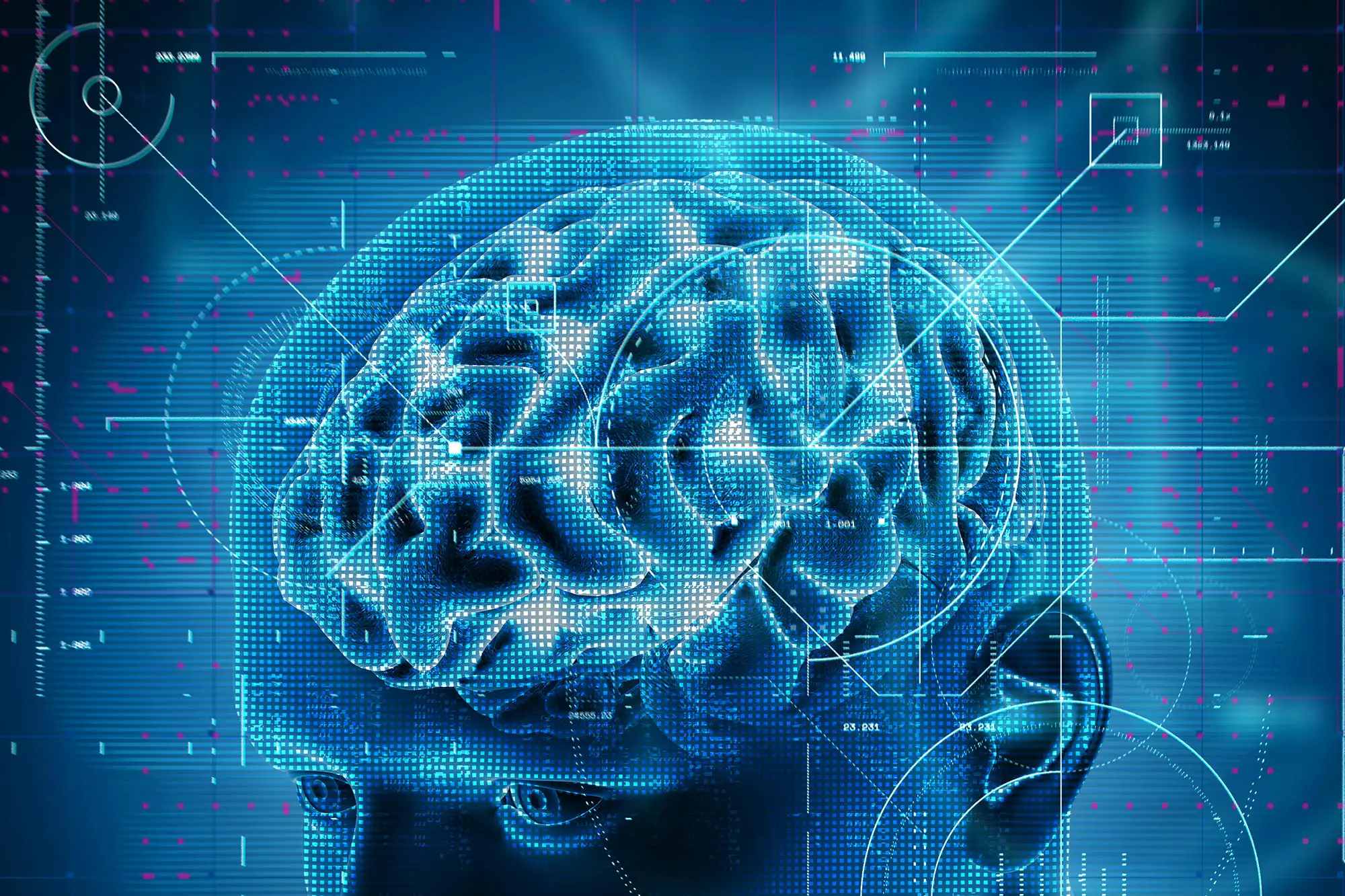
Researchers have discovered that the shape of a person’s brain significantly impacts thought, feeling, and behavior, overturning the prevailing emphasis on complex neuronal connectivity. Utilizing MRI scans and the principle of eigenmodes, they found that brain function is closely linked to its geometric properties, much like how the shape of a musical instrument determines its sound, offering new avenues for exploring brain function and disease. The shape of our brain rather than the interactions between various regions, plays a pivotal role in influencing our thoughts, emotions, and actions.
For over a hundred years, scientists have held the belief that our thoughts, feelings, and dreams are shaped by the way various brain regions interact via a vast network of trillions of cellular connections.
However, a recent study led by the team at Monash University’s Turner Institute for Brain and Mental Health has examined more than 10,000 distinct maps of human brain activity and discovered that the overall shape of an individual’s brain has a much more substantial impact on our cognitive processes, emotions, and behavior than its intricate neuronal connectivity.
The study, recently published in the prestigious journal, Nature draws together approaches from physics, neuroscience, and psychology to overturn the century-old paradigm emphasizing the importance of complex brain connectivity, instead identifying a previously unappreciated relationship between brain shape and activity.
Lead author and Research Fellow Dr James Pang, from the Turner Institute and Monash University’s School of Psychological Sciences, said the findings were significant because they greatly simplified the way that we can study how the brain functions, develops, and ages.
Alex Fornito (left) and James Pang studied over 10,000 MRIs to determine brain shape is important. Credit: Monash University
“The work opens opportunities to understand the effects of diseases like dementia and stroke by considering models of brain shape, which are far easier to deal with than models of the brain’s full array of connections,” Dr Pang said.
“We have long thought that specific thoughts or sensations elicit activity in specific parts of the brain, but this study reveals that structured patterns of activity are excited across nearly the entire brain, just like the way in which a musical note arises from vibrations occurring along the entire length of a violin string, and not just an isolated segment,” he said.
The research team used magnetic resonance imaging (MRI) to study eigenmodes, which are the natural patterns of vibration or excitation in a system, where different parts of the system are all excited at the same frequency. Eigenmodes are normally used to study physical systems in areas such as physics and engineering and have only recently been adapted to study the brain.
This work focused on developing the best way to efficiently construct the eigenmodes of the brain.
“Just as the resonant frequencies of a violin string are determined by its length, density, and tension, the eigenmodes of the brain are determined by its structural––physical, geometric and anatomical––properties, but which specific properties are most important has remained a mystery,” said co-lead author, Dr Kevin Aquino, of BrainKey and The University of Sydney .
The team, led by the Turner Institute and School of Psychological Sciences ARC Laureate Fellow, Professor Alex Fornito, compared how well eigenmodes obtained from models of the shape of the brain could account for different patterns of activity when compared to eigenmodes obtained from models of brain connectivity.
“We found that eigenmodes defined by brain geometry––its contours and curvature––represented the strongest anatomical constraint on brain function, much like the shape of a drum influences the sounds that it can make,” said Professor Fornito.
“Using mathematical models, we confirmed theoretical predictions that the close link between geometry and function is driven by wave-like activity propagating throughout the brain, just as the shape of a pond influences the wave ripples that are formed by a falling pebble,” he said.
“These findings raise the possibility of predicting the function of the brain directly from its shape, opening new avenues for exploring how the brain contributes to individual differences in behavior and risk for psychiatric and neurological diseases.”
The research team found that, across over 10,000 MRI activity maps, obtained as people performed different tasks developed by neuroscientists to probe the human brain, activity was dominated by eigenmodes with spatial patterns that have very long wavelengths, extending over distances exceeding 40 mm.
“This result counters conventional wisdom, in which activity during different tasks is often assumed to occur in focal, isolated areas of elevated activity, and tells us that traditional approaches to brain mapping may only show the tip of the iceberg when it comes to understanding how the brain works,” Dr. Pang said.
Reference: “Geometric constraints on human brain function” by James C. Pang, Kevin M. Aquino, Marianne Oldehinkel, Peter A. Robinson, Ben D. Fulcher, Michael Breakspear and Alex Fornito, 31 May 2023, Nature .
DOI: 10.1038/s41586-023-06098-1
12 Best Foods for a Healthy Brain and Better Memory
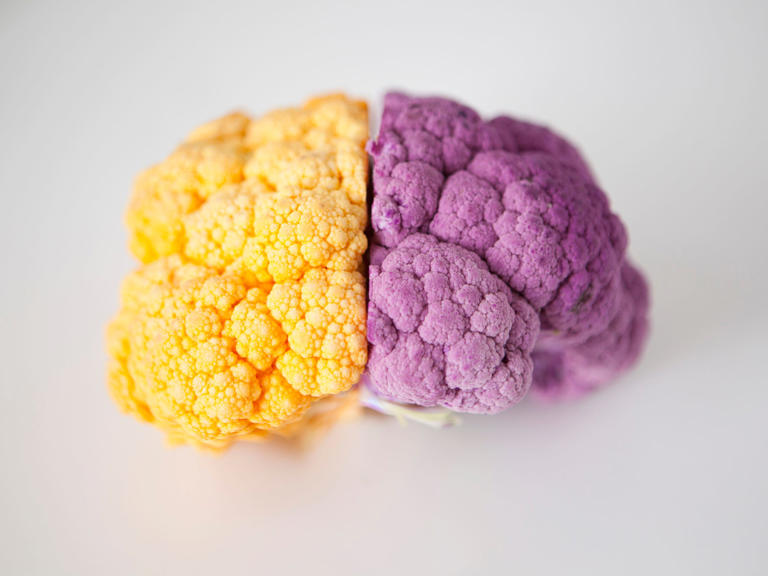
It’s not often that the brain thinks about itself and all that it does to keep us properly functioning. However, the reality is that it takes a lot of energy to think, move and go about our daily lives. And our brain needs adequate fuel to do its job well.
Studies show that, on average, the brain accounts for about 20% of the calories we burn daily. However, that doesn’t mean any food will help your brain power through. When it comes to bolstering your brain to do its best work — staying focused and maintaining a strong memory — some foods are much better than others.
Consuming nutrient-dense foods will not only keep you brain happy and healthy, but may also aid in preventing diseases like dementia. The Mediterranean diet , which emphasizes consumption of whole foods like fruits, vegetables, legumes and fish, has shown promising results in prevent age-related conditions. This diet has also been shown to lower high blood pressure, which is a risk factor for Alzheimer’s disease .
If you want to keep your mind in good shape, here are the 12 best foods for brain health. Leafy greens
Not to parrot your mother, but she was right on this one. Those leafy greens really are good for you, especially your brain. Spinach, collards, kale — you name it. These veggies are rich in brain-boosting nutrients such as beta-carotene, folic acid, lutein and vitamin K. Plus, research has shown that plant-based foods may be especially good for curbing cognitive decline .
Daily recommended intake: Aim for about 1/4 of a cup per day , or 1.5 to 2 cups a week. Nuts
Nuts are lauded as a source of protein and healthy fats. But they’re also great brain foods. Each nut has unique benefits, and including pistachios, macadamias and almonds in your diet will definitely support your brain health. But for a real mental power boost , turn to walnuts. They’re packed with omega-3 fatty acids and antioxidants, both of which are important for preventing mental decline.
Daily recommended intake: A 2021 study found that adults who consumed 15 to 30 grams of nuts per day had notably higher cognitive scores than those who ate less. Coffee and tea
You may be accustomed to drinking coffee or tea to stay awake, but these caffeinated beverages have more to offer than a simple morning perk-up. Researchers have noted caffeine’s ability to boost the brain’s information-processing capacity , and coffee also packs many powerful antioxidants, which may help support brain health . In addition to both of these, green tea is rich in L-theanine. This powerful amino acid can help manage stress and anxiety , which is important for brain function.
Daily recommended intake: Up to 400 milligrams of caffeine per day (about four cups of coffee or black tea) is generally considered safe for most adults. Tomatoes
Tomatoes are one of the best foods for brain health, thanks to their rich lycopene content. This powerful carotenoid has been shown to help stave off cognitive disorders such as Alzheimer’s and Parkinson’s diseases. One fresh, medium tomato contains about 3.2 milligrams of lycopene , and you can also find even more in tomato sauces, pastes and ketchup.
Daily recommended intake: Studies show that 9 to 21 milligrams of lycopene per day may be most beneficial. Whole grains
Whole grains like whole wheat, oatmeal, barley and brown rice are essential parts of a balanced diet, and they’re known to support cardiovascular health . What’s less well-known is that many whole grains are rich in vitamin E, an important antioxidant that helps reduce the presence of free radicals and prevent neurological damage . Experts also favor consuming vitamin E in its natural form rather than via supplements, making whole grains a great choice for boosting vitamin E intake.
Daily recommended intake: Guidelines recommend at least three servings of whole grains per day, totaling at least 48 grams. Broccoli
Leafy greens aren’t the only green veggies that make the list of the best foods for brain health. Broccoli and other cruciferous vegetables are also important. These vegetables contain high doses of glucosinolates . When combined with water, these compounds produce isothiocyanates, powerful metabolites known to have neuroprotective properties .
Daily recommended intake: The USDA recommends that adults eat 1.5 to 2.5 grams of cruciferous vegetables per week. Salmon and tuna
You may make it a habit to avoid fatty foods, but when it comes to fish, fat is a good thing. Fish such as salmon and tuna are rich in omega-3 fatty acids, which are associated with many positive health outcomes, including for the brain. In particular, these healthy fats have been tied to lower levels of beta-amyloid in the blood. This damaging protein forms clumps in the brain that often lead to Alzheimer’s disease.
Daily recommended intake: Aim for at least two servings of low-mercury fish such as salmon and light tuna per week. Berries
An apple a day may keep the doctor away, but a bunch of berries keeps mental decline at bay. Berries are one of the best brain foods because they’re packed with flavonoids . Not only do these natural pigments make berries colorful, but they also improve brain function, particularly when it comes to memory.
Daily recommended intake: Eating at least two servings (half a cup each) of berries per week has been shown to slow memory decline by as much as two-and-a-half years. Dark chocolate
If you’re looking for food that’s good for your brain, a delicious treat like dark chocolate might not come to mind. But dark chocolate brings together many of the benefits of the other foods on this list. It’s full of antioxidants, flavonoids and caffeine , making it one of the more brain-healthy foods you can eat. Don’t say I didn’t give you any good news.
Daily recommended intake: A small snack of dark chocolate, 30 to 60 grams a few times a week, may help improve brain function. Make sure it’s at least […]
MIND over matter: Brain-boosting diet could enhance focus in children

A recent study from the University of Illinois Urbana-Champaign reveals a compelling link between dietary patterns and focus levels in pre-adolescents, potentially paving the way for future interventions.
The research indicates that the Mediterranean-DASH Intervention for Neurodegenerative Delay (MIND) diet – a program originally conceived to prevent cognitive decline in adults – could potentially enhance attention in school-aged children. The MIND diet
The researchers examined two specific diets: the Healthy Eating Index – 2015 (HEI-2015) – a diet centered on the Dietary Guidelines for Americans, and the MIND diet.
The MIND diet merges the Mediterranean diet with the heart-conscious Dietary Approaches to Stop Hypertension (DASH) diet. This unique fusion leads to a dietary regimen that targets brain health .
“We assessed how adherence to these diets was associated with children’s attentional inhibition – the ability to resist distracting stimuli – and found that only the MIND diet was positively linked with children’s performance on a task assessing attentional inhibition,” said Dr. Shelby Keye, the lead researcher on the study.
“This suggests that the MIND diet could have the potential to improve children’s cognitive development, which is important for success in school.”
Dr. Keye will be presenting these findings at NUTRITION 2023, the American Society for Nutrition ‘s annual flagship event held from July 22-25 in Boston.
Just like its parent diets – the DASH and the Mediterranean – the MIND diet focuses on the consumption of fresh fruits, vegetables, and legumes such as beans, lentils, and peas. However, it takes a step further by advocating for specific brain-boosting foods like leafy greens and berries.
The beneficial impacts of the MIND diet on adults have been documented, but research focusing on children has been scarce. Focus of the study
For their investigation, the researchers used data from an earlier cross-sectional study led by Dr. Naiman Khan, a professor of Kinesiology and Community Health at the University of Illinois Urbana-Champaign.
The study was focused on a diverse group of 85 children between 7 and 11 years old. The young participants were asked to maintain a seven-day diet record. The researchers used this record to calculate their HEI-2015 and MIND diet scores.
The children’s attentional inhibition was evaluated through a task requiring spatial attention and executive control, with their reaction times and accuracy meticulously recorded. To eliminate confounding factors, children with neurological disorders such as ADHD or autism were exempted from the study. What the researchers discovered
The analysis revealed that participants who adhered more closely to the MIND diet exhibited enhanced accuracy in the task. This correlation, however, was not observed with the HEI-2015 diet.
The researchers were careful to underline that the study demonstrates an association and not causality, pointing out that an intervention study would be required to ascertain any causal relationship.
The team is now setting their sights on understanding the relationship between the MIND diet and attention in even younger children, including preschoolers and toddlers.
The experts aim to identify whether there are age-based differences and whether developmental effects come into play. This new direction could potentially yield invaluable insights into the developmental influences of diet on cognition. More about the MIND diet
The MIND (Mediterranean-DASH Diet Intervention for Neurodegenerative Delay) diet is a hybrid of the Mediterranean and DASH (Dietary Approaches to Stop Hypertension) diets, two well-known dietary regimens known for their heart health and hypertension management benefits.
The MIND diet was designed to protect the brain and reduce the risk of neurological conditions, specifically dementia and Alzheimer’s disease. It was developed by researchers at Rush University Medical Center, who combined elements of the Mediterranean and DASH diets that specifically impact brain health.
The MIND diet consists of 15 dietary components, including ten “brain-healthy food groups” and five “unhealthy food groups”. The brain-healthy foods are green leafy vegetables, other vegetables, nuts, berries, beans, whole grains, fish, poultry, olive oil, and wine. The unhealthy foods include red meats, butter and stick margarine, cheese, pastries and sweets, and fried or fast food.
Adherence to the MIND diet involves more than simply including the healthy foods in your diet – it’s also about limiting consumption of the unhealthy ones. The aim is to eat food from the ten brain-healthy groups and avoid foods from the five unhealthy groups.
—-
Check us out on EarthSnap , a free app brought to you by Eric Ralls and Earth.com .
Some people’s brain function still affected by Long COVID years after infection
Some people’s brain function still affected by Long COVID years after infection
UK researchers have found that people with longer-term COVID-19 symptoms including brain fog showed reduced performance in tasks testing different mental processes up to two years after infection with the virus.
Researchers from King’s College London looked at whether infection with COVID-19 affected performance in two rounds of online cognitive testing that took place in 2021 and 2022. Data was collected for over 3,000 participants of the COVID Symptom Study Biobank study, across 12 tasks that tested memory, attention, reasoning, processing speed and motor control.
The participants whose test scores were most affected by COVID-19 were those who had experienced symptoms related to the virus for 12 weeks or more. In these people, the effect of COVID-19 on test accuracy was comparable in size to the effect of a 10-year increase in age.
There was no significant improvement in these test scores between the two rounds of testing, which took place nine months apart. By the second round of testing, the average time since participants’ initial COVID-19 infection was almost two years.
Digging deeper into the analysis, the researchers separated participants by whether they felt fully recovered following COVID-19 infection. People who felt fully recovered after COVID-19 infection performed similarly to those who had not had the virus at all. In contrast, participants who did not feel fully recovered after infection had lower task accuracy scores on average.
Lead author Dr Nathan Cheetham, a Senior Postdoctoral Data Scientist at King’s College London said:
“Our findings suggest that, for people who were living with long-term symptoms after having COVID-19, the effects of the coronavirus on mental processes such as the ability to recall words and shapes are still detectable at an average of almost two years since their initial infection.
“However, the result that COVID had no effect on performance in our tests for people who felt fully recovered, even if they’d had symptoms for several months and could be considered as experiencing ‘long COVID’, was good news. This study shows the need to monitor those people whose brain function is most affected by COVID-19, to see how their cognitive symptoms continue to develop and provide support towards recovery.”
Professor Claire Steves, a Professor of Ageing and Health at King’s College London, added:
“We used sensitive tests to measure speed and accuracy across a range of brain challenges. This study shows that some individuals have measurable changes in these tests after COVID-19 going on for nearly two years. The fact remains that two years on from their first infection, some people don’t feel fully recovered and their lives continue to be impacted by the long-term effects of the coronavirus. We need more work to understand why this is the case and what can be done to help.”
The paper, ‘The effects of COVID-19 on cognitive performance in a community-based cohort: A COVID Symptom Study Biobank prospective cohort study,’ is published today in eClinicalMedicine . Journal
EClinicalMedicine DOI
10.1016/j.eclinm.2023.102086 Method of Research
Observational study Subject of Research
People Article Title
The effects of COVID-19 on cognitive performance in a community-based cohort: a COVID symptom study biobank prospective cohort study Article Publication Date
21-Jul-2023
Disclaimer: AAAS and EurekAlert! are not responsible for the accuracy of news releases posted to EurekAlert! by contributing institutions or for the use of any information through the EurekAlert system.
Brain Wave Study Reveals Secrets of Unconsciousness
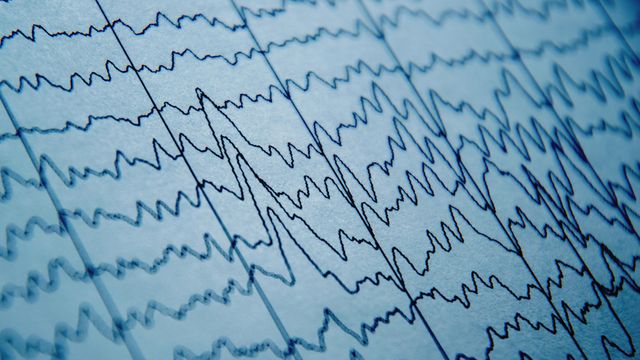
Spelunking the depths of unconsciousness may have gotten a notch easier, as researchers from MIT unveil a pioneering study on how general anesthetics affect our brain waves. New markers of brain wave activity could allow anesthetists to stop patients from entering a deeper state of unconsciousness, called burst suppression, which is linked to impaired cognition post-anesthesia.
The new research, produced by a team at MIT, was published in the Proceedings of the National Academy of Sciences . What goes on when we go under?
The researchers used a technique called electroencephalography (EEG) to analyze the brain waves of 10 healthy volunteers and 30 people who were to be put under general anesthesia for surgery. Most patients were dosed with the anesthetic propofol, which is administered intravenously. Others were given sevoflurane, an anesthetic gas.
The team wanted to understand how these anesthetics alter brain waves. These are synchronized patterns of activity that are produced by groups of neurons. Depending on what the brain is doing, different brain wave oscillations emerge. When we are engaged in challenging cognitive tasks, our brains emit high-frequency beta (15–30 hertz) and gamma (above 30 hertz) wave patterns.
But when we are put under anesthetics, these patterns are drastically altered. These anesthetics increase the output of inhibitory receptors in the brain that respond to the neurotransmitter GABA. This sends the brain into an unconscious state called slow-delta-alpha (SDA). In this state, much slower brain waves predominate; delta brain waves have a frequency of 1–4 hertz, while alpha waves oscillate at 8–14 hertz. Want more breaking news?
Subscribe to Technology Networks ’ daily newsletter, delivering breaking science news straight to your inbox every day.
Subscribe for FREE
Neuroscientists have previously studied both burst suppression and SDA, identifying distinct patterns of brain activity using EEG for both states. However, what occurs in the transition from one state to another has, so far, remained unclear.
But Brown and his team have now produced some insight. Slow waves
The team noted that as patients became unconscious, their alpha waves started to vary in amplitude in a distinctive pattern. Emery Brown, the Edward Hood Taplin Professor of Medical Engineering and Computational Neuroscience and a member of MIT’s Picower Institute for Learning and Memory and the Institute for Medical Engineering and Science, said, “If you track this modulation as it gets deeper or shallower, you have a very principled way to track level of unconsciousness under anesthesia.” When patients entered burst suppression, this pattern started to change. Alpha wave activity started to gradually decrease in amplitude. “You can see a very strong modulation, which is always there. As the modulation gets to be more profound, it eventually flattens out, and that’s when the brain reaches the deeper state,” Brown added. When propofol levels were decreased, the alpha waves’ amplitude began to increase once again.
Similar marker patterns were seen in delta waves. The team noted from patients’ EEG recordings that these brain waves, already the slowest brain wave category, lowered their frequency even further, indicating a decrease in brain activity.
Post-operation, patients who have entered burst suppression are more likely to experience adverse side effects, like memory loss and confusion. In rare cases, these side effects can last for months and are more likely to affect elderly patients, making a reliable indicator of burst suppression entry a useful tool. No energy, no activity
The researchers have begun to speculate how these drugs might exert such effects. Brown suggests that neuron metabolism is key. Propofol is thought to disrupt the production of a molecule called ATP, which cells use as an energy store. With fewer energy reserves available, neurons lose the ability to fire, decreasing activity. “This is consistent with the observation that burst suppression is very frequent in older patients, because their metabolic state may be less well-regulated than that of younger patients,” said Brown.
The team now wants to explore the mechanisms involved further and feed this data into an algorithm that could sound off automatic warnings to anesthetists as their patients enter burst suppression, allowing them to fine-tune anesthetic levels. Physicians could even be trained to spot the regimented burst suppression patterns themselves by looking at an EEG readout. “One of the reasons we’re excited about this is that it’s something you can actually see in the raw EEG,” Brown said. “Now that we have pointed out these patterns, they’re very easy to see.”
Reference : Adam E, Kwon O, Montejo KA, Brown EN. Modulatory dynamics mark the transition between anesthetic states of unconsciousness. Proceedings of the National Academy of Sciences. 2023;120(30):e2300058120. doi: 10.1073/pnas.2300058120
This article is a rework of a press release issued by MIT. Material has been edited for length and content.
New theory better explains how the brain stores memories
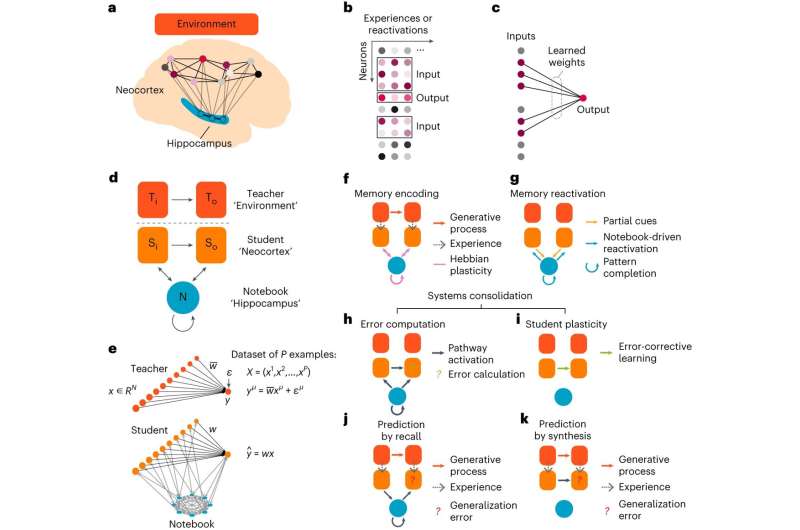
Neural network model of systems consolidation. Credit: Nature Neuroscience (2023). DOI: 10.1038/s41593-023-01382-9 How useful a memory is for future situations determines where it resides in the brain, according to a new theory proposed by researchers at HHMI’s Janelia Research Campus and collaborators at UCL.
The theory, published in Nature Neuroscience , offers a new way of understanding systems consolidation, a process that transfers certain memories from the hippocampus —where they are initially stored—to the neocortex—where they reside long-term.
Under the classical view of systems consolidation, all memories move from the hippocampus to the neocortex over time. But this view doesn’t always hold up; research shows some memories permanently reside in the hippocampus and are never transferred to the neocortex.
In recent years, psychologists proposed theories to explain this more complicated view of systems consolidation, but no one has yet figured out mathematically what determines whether a memory stays in the hippocampus or whether it is consolidated in the neocortex.
Now, Janelia researchers are putting forward a new, quantitative view of systems consolidation to help resolve this longstanding problem, proposing a mathematical neural network theory in which memories consolidate to the neocortex only if they improve generalization.
Generalizations are constructed from the reliable and predictable components of memories, enabling us to apply them to other situations. We can generalize certain features of memories to help us understand the world, like the fact that canyons predict the presence of water.
This is different from episodic memories—detailed recollections of the past that have unique features, like an individual memory we have of hiking to a particular canyon and coming upon a body of water.
Under this view, consolidation doesn’t copy memories from one area of the brain to another but rather creates a new memory that is a generalization of previous memories. The amount that a memory can be generalized—not its age—determines whether it is consolidated or remains in the hippocampus.
The researchers used neural networks to show how the amount of consolidation varies based on how much of a memory is generalizable. They were able to reproduce previous experimental patterns that couldn’t be explained by the classical view of systems consolidation.
The next step is to test the theory with experiments to see if it can predict how much a memory will be consolidated. Another important direction will be to test the authors’ models of how the brain might distinguish between predictable and unpredictable components of memories to regulate consolidation. Uncovering how memory works can help researchers better understand an integral part of cognition, potentially benefiting human health and artificial intelligence.
Provided by Howard Hughes Medical Institute
9 Brain-Boosting Foods to Enhance Your Cognitive Function Kawaii and the psychology of cuteness
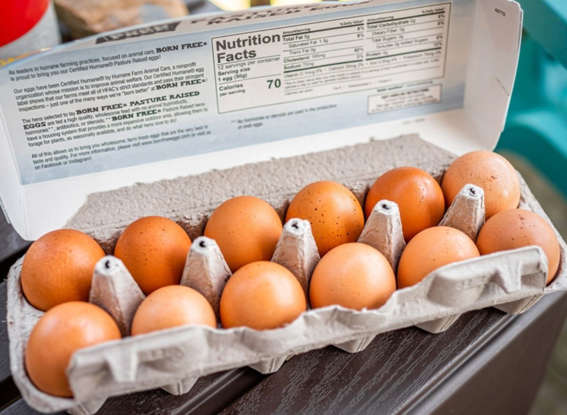
1. Eggs 2 of 10 Photos in Gallery © Provided by Eat This, Not That! 2 of 10 Photos in Gallery Eggs are a natural source of nutrients that support brain health, including choline (150 milligrams per large egg) and lutein and zeaxanthin (252 micrograms per large egg).The choline in eggs helps support lifelong brain health at every age and stage, including memory, thinking, mood, and more. Unfortunately, around 90% of Americans fall short of the recommended intake of choline, and intake declines after age 50 with only 4% of adults aged 71 and older reaching the adequate intake for choline. Eggs are one of the few foods rich in choline and can help Americans meet the recommended daily intake.Lutein has long been associated with eye health but research has discovered lutein may play an important role in cognition as well. Similar to how lutein accumulates in the eye, it’s also present in the brain and has been positively associated with better cognitive function in older adults and academic performance in children.Routine intake of eggs has been associated with improved cognitive performance in adults, possibly, in part, because of the brain health-supporting nutrients that this food offers. It is important to remember to eat the yolk, as this is where both choline and lutein are found.Yes, you can (and should) eat the yolk! According to the American Heart Association, healthy individuals can include up to a whole egg or equivalent daily as part of a heart-healthy dietary pattern. For older people with healthy cholesterol levels, given the nutritional benefits and convenience of eggs, consumption of up to two eggs per day is acceptable within the context of a heart-healthy dietary pattern. And vegetarians may include even more eggs in their diets within the context of moderation.RELATED: 4 Surprising Effects of Eating Egg Yolks 1. Eggs
Eggs are a natural source of nutrients that support brain health, including choline (150 milligrams per large egg) and lutein and zeaxanthin (252 micrograms per large egg).
The choline in eggs helps support lifelong brain health at every age and stage, including memory, thinking, mood, and more. Unfortunately, around 90% of Americans fall short of the recommended intake of choline , and intake declines after age 50 with only 4% of adults aged 71 and older reaching the adequate intake for choline. Eggs are one of the few foods rich in choline and can help Americans meet the recommended daily intake.
Lutein has long been associated with eye health but research has discovered lutein may play an important role in cognition as well. Similar to how lutein accumulates in the eye, it’s also present in the brain and has been positively associated with better cognitive function in older adults and academic performance in children.
Routine intake of eggs has been associated with improved cognitive performance in adults , possibly, in part, because of the brain health-supporting nutrients that this food offers. It is important to remember to eat the yolk, as this is where both choline and lutein are found.
Yes, you can (and should) eat the yolk! According to the American Heart Association , healthy individuals can include up to a whole egg or equivalent daily as part of a heart-healthy dietary pattern. For older people with healthy cholesterol levels, given the nutritional benefits and convenience of eggs, consumption of up to two eggs per day is acceptable within the context of a heart-healthy dietary pattern. And vegetarians may include even more eggs in their diets within the context of moderation.
RELATED: 4 Surprising Effects of Eating Egg Yolks 1 of 30 Photos in Gallery ©Shutterstock
How Brain Performance Optimization Is Transforming Sport—And Potentially Business
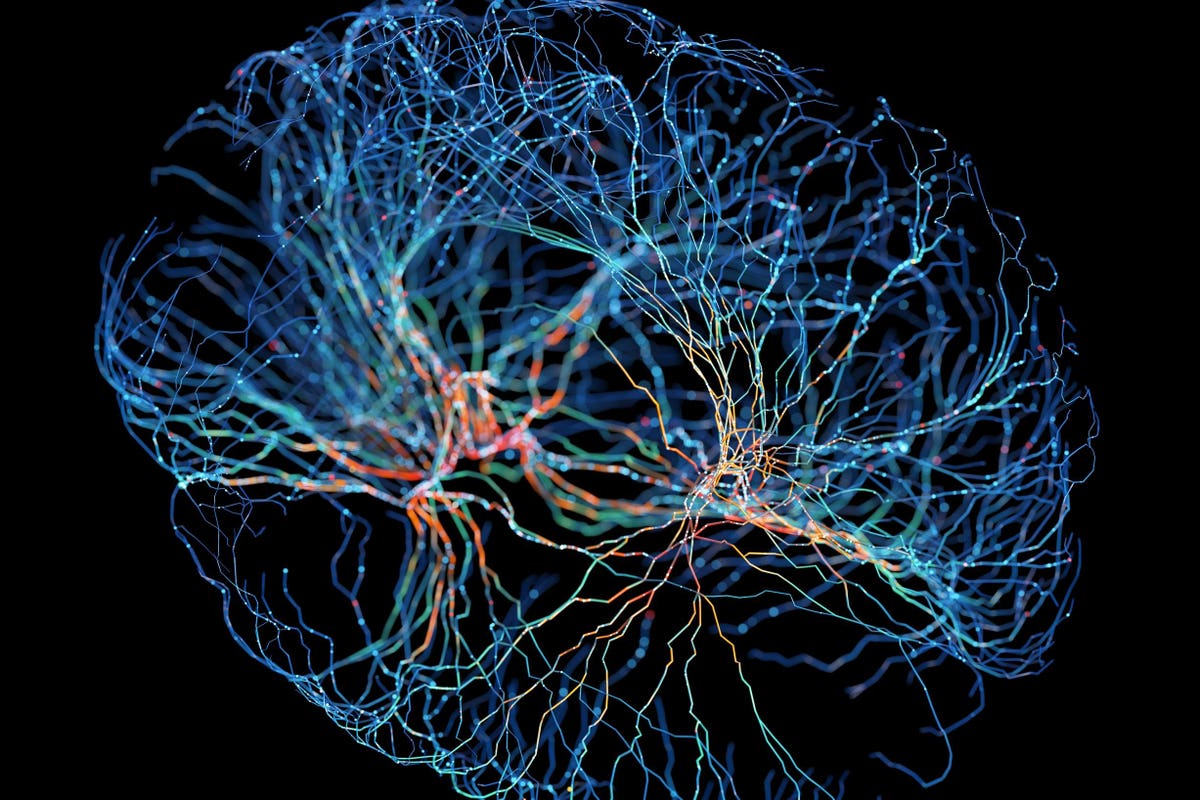
Neuroscientist, Entrepreneur & President of NeuroCatch, Inc . Dr. Ryan D’Arcy shares insights on brain imaging, disorders & medical tech. getty The world of sports has long been associated with toughness and resilience, with athletes lauded for their ability to endure physical and mental challenges. For example, rugby has been associated with some of the highest concussion rates of all sports. However, winning supersedes all such secondary accolades, and challenges to the notion that concussions are a badge of honor notion are rising. Instead, we have a tremendous opportunity to flip the script and honor peak brain performance.
What if even the toughest and most resilient of athletes traded away their exceptional capabilities and skills to win each time they were exposed to contact? Try asking a multimillion-dollar superstar athlete to repeatedly bang their head against a wall and then go deliver their best career performance. As we learn more about the human brain and its vulnerabilities, concerns have been raised about the potential impact of contact sports on cognitive function.
While some have called for an end to contact sports altogether, this is understandably disregarded by many as far from the ideal solution. It could, nonetheless, be as simple as shifting our focus from concussion to brain performance optimization instead.
Concussion management is vital, as concussions reduce our brain performance from its optimal potential. By logical extension, minimizing concussion should be considered the highest form of biohacking to optimize brain performance.
MORE FOR YOU House Approves Israel Support Resolution In Landslide 412-9 Vote—A Direct Response To Democrat Who Called It A ‘Racist State’
New TikTok ‘Aged’ Filter: Here Are Reactions From Kylie Jenner, Kim Kardashian, Amy Poehler
We stumbled upon this perspective through our technology research on subconcussive impacts, in which concussion events were below the diagnostic threshold for medical care. In published subconcussive studies , it was possible to show that the accumulated impact over the course of a season consequently led to significant cognitive processing delays in young hockey and football players.
Understandably, the initial reaction to this evidence was a cautious concern that it indicated a more widespread problem. The perspective has begun to shift.
In medicine, you can’t treat what you can’t measure. This well-established axiom meant the results were powerful and potentially positive, provided a treatment could be quickly identified. By ensuring that cognitive processing speed was not slowed or affected in any way as a result of contact exposure, brain performance could essentially be optimized against the accumulation of subconcussive damage.
Innovations in technology are enabling the measurement of cognitive processing speed and accelerating the shift in perspectives around concussions. We worked with National Rugby League player Kalyn Ponga, who had suffered multiple concussions that could’ve forced his possible retirement. We helped Kalyn objectively measure his recovery and focus on brain performance optimization through technology, enabling a stronger competitive position.
Of course, this doesn’t mean we should ignore the risks associated with contact sports. Quite the opposite—these same technologies have shown remarkable promise in treating the highest risk and severity of brain injuries. Protecting our brains is just as important as protecting our bodies (I would argue even more important, but I’m a neuroscientist).
This shift in focus toward brain performance optimization could have broader implications beyond just the world of sports. Notwithstanding that concussions often happen outside of sports (such as car accidents), optimizing brain performance in the business world could lead to improved productivity, creativity and overall well-being. Here, it is perhaps helpful to call up the concept of the corporate athlete where the concern is age-related cognitive impairment (e.g., dementia) rather than concussion.
Business leaders have the opportunity to adopt a similar strategy. Immediate tangible benefits will come from the basics of brain health (regular exercise, healthy diet and good sleep hygiene), proactive mental health and resilience and reactivated recovery phases in the peak performance cycle to prevent burnout. All of these are well-established factors that quickly impact the bottom line—activated simply by a shift in perspective.
Companies could also invest in technologies and programs to help employees maximize their cognitive function and avoid long-term cognitive impairment. However, there are some specific internal steps, programs and strategies that leaders and businesses can consider as they embark on the journey:
1. Create awareness about the importance of cognitive function and conduct workshops or training sessions to educate employees on optimizing brain performance.
2. Define measurable objectives and identify assessment tools to monitor and evaluate organizational cognitive performance.
3. Incorporate cognitive assessments into performance evaluations or wellness programs to identify areas for improvement.
4. Develop programs that promote brain health, offering resources such as mindfulness training, stress management techniques and healthy lifestyle initiatives.
5. Create a supportive culture that values cognitive well-being, providing resources and support systems to help employees manage stress, maintain focus and enhance their cognitive abilities.
These steps can prepare organizations to incorporate technology and programs to optimize cognitive function, and they can help companies overcome challenges such as resistance to change and lack of awareness. By prioritizing cognitive well-being, organizations can maximize benefits for employees and the organization.
We can still enjoy contact sports while minimizing the risk of brain injury and maximizing the potential for peak brain performance. For those corporate athletes, we can also still work toward peak performance while lessening the fear of dementia and other devastating conditions that silently rob our mental acuity. Technology is opening up new avenues to maximize brain performance, which can minimize injury. The simplest way to protect our brains is to value them—and then do something about it.
As the world evolves, we must adapt our thinking and embrace new approaches to protect and enhance our most important asset: our brains.
Forbes Technology Council is an invitation-only community for world-class CIOs, CTOs and technology executives. Do I qualify?
